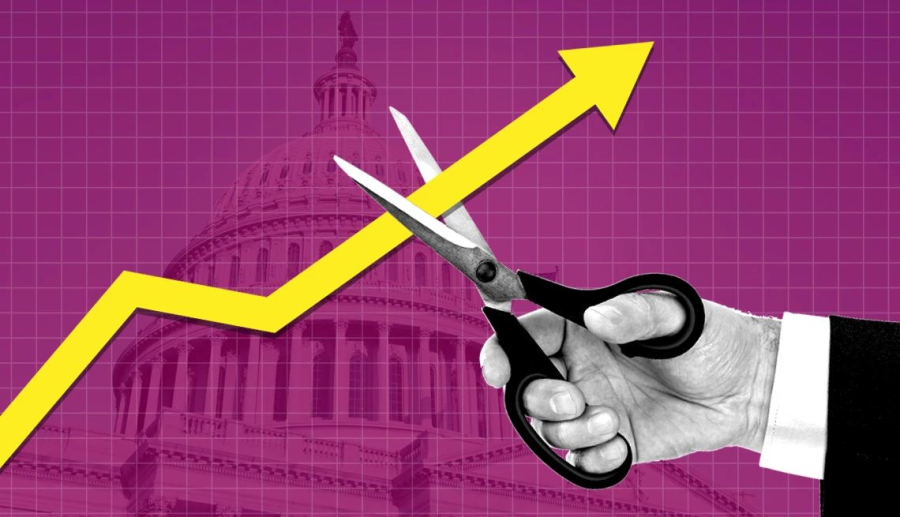
On November 7, 2024, the Federal Open Market Committee (FOMC) of the Federal Reserve announced a 25-basis point cut in the federal funds rate, bringing it down to a range of 4.50% to 4.75%. This decision was made in light of recent economic indicators suggesting a slowdown in the labor market, despite solid economic growth. The cut aims to stimulate borrowing, consumption, and investment, which could potentially invigorate an economy that has been facing various pressures.
Economic Rationale
- Inflation Control: With inflation having moderated but still above the Fed’s 2% target, this cut might signal the Fed’s confidence in managing inflation without stifling growth. The personal consumption expenditures price index (PCE) was recently reported at 2.6%, indicating that inflation is under control but not at the desired level.
- Labor Market Dynamics: The Fed has noted signs of easing in the labor market, which might be a proactive move to prevent unemployment from rising too sharply. The rate cut could encourage businesses to invest more in capital and labor, potentially stemming any downturn in employment.
- Economic Stimulus: Lower interest rates typically encourage borrowing for consumer spending and business investments, which can help in maintaining or boosting economic activity.
Impact on the Housing Market
- Mortgage Rates: The immediate effect of a Fed rate cut is often a decrease in mortgage rates. Although mortgage rates are influenced by many factors, including the yield on 10-year Treasury notes, Fed actions set the tone. Rates had already begun to decline, sitting at around 6.2% for a 30-year fixed mortgage before the cut, indicating a possible further reduction which could encourage home buying.
- Housing Affordability: Lower borrowing costs enhance housing affordability. However, this might not immediately translate to lower home prices due to the complex interplay of supply and demand. While lower rates could spur demand, the lack of inventory in the market might keep prices elevated or even push them higher due to increased competition among buyers.
- Home Sales: The expectation is that reduced rates will lead to an increase in home sales. Analysts suggest that the fall housing market could be stronger than typical, with a potential rebound in activity in the following spring.
- Home Construction: Lower rates can also stimulate new home construction. Developers might find it easier to finance projects, potentially increasing the supply of new homes. However, this depends on various factors like zoning laws, construction costs, and builder confidence.
Broader Economic Implications
- Consumer Spending: With cheaper loans for big-ticket items like homes and cars, consumer spending might see a boost, although this depends on consumer confidence and disposable income levels.
- Investment: For businesses, lower interest rates reduce the cost of borrowing, which could lead to increased investments in expansion, technology, or new ventures, fostering economic growth.
- Savings and Investments: While savers might see a dip in returns from savings accounts and CDs, investors could find equities more attractive if rates continue to decline, potentially leading to a bullish stock market.
- Global Impact: U.S. monetary policy significantly influences global markets due to the dollar’s status. A rate cut could lead to capital flows into the U.S., affecting exchange rates and international investment decisions.
Potential Risks
- Inflation Surge: If not carefully managed, the rate cut could reignite inflation pressures, especially in sectors like housing where demand might outstrip supply.
- Asset Bubbles: Continuous rate cuts could lead to overvaluation in assets, particularly real estate and stocks, if the influx of cheap money significantly exceeds real economic growth.
- Debt Levels: Lower rates might encourage excessive borrowing, increasing debt levels which could be problematic if economic conditions change adversely.
Conclusion
The Federal Reserve’s recent rate cut is a strategic move aimed at maintaining economic stability and encouraging growth in a nuanced economic environment. While it presents opportunities for increased activity in the housing market and broader economy, it also carries risks that need vigilant monitoring. The effectiveness of this policy will largely depend on how these rates interact with other economic variables like employment, consumer behavior, and global economic conditions.
This adjustment in monetary policy underscores the Fed’s commitment to a balanced approach between fostering economic growth and controlling inflation, with a keen eye on the housing market as a significant economic indicator and driver.








